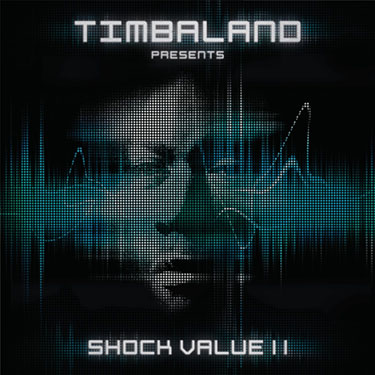Chapman, Dale. “That Ill, Tight Sound”: Telepresence and Biopolitics in Post-Timbaland Rap Production. Journal of the Society for American Music (2008) Volume 2, Number 2, pp. 155–175.
Chapman examines the impact that Timbaland has had on popular music production, and what his significance is to the broader culture. While Timbaland himself is no longer the tastemaker he was at his peak ten or fifteen years ago, his sonic palette has become commonplace throughout the global pop landscape.
The first generation of hip-hop producers built tracks around samples of vinyl funk, soul and jazz albums. These samples were imbued with all the sonic ambiance of 1960s and 1970s recording: warm-sounding equalization, reverb, analog compression, and all the small performative imperfections resulting from people playing live in a room. Timbaland uses such samples too, but very rarely. He typically builds his tracks “from scratch,” using drum machines and synthesizers. Timbaland favors the highly artificial sound of the Roland TR-808 and other synthesized percussion sounds. He pairs these sounds with otherworldly synthesizer pads and out-of-context ethnic sounds. For example, in “Get Ur Freak On,” a track he produced for Missy Elliot, Timbaland mixes koto, a tabla beat, a droning synths and American-sounding kick drums and rimshots, a combination that places the song everywhere and nowhere. He adds to the placelessness by dropping in some meaningless snippets of speech in Japanese and Hindi.
Chapman aptly describes Timbaland’s sound as “two-dimensional.” The sounds are bone-dry, without reverb, delay, or any of the other usual methods for giving music a sense of space. Also, there is no extraneous between-note noise; Timbaland’s tracks use a backdrop of total silence. When I was learning Pro Tools, I was urged several times never to allow any silence — to avoid “digital black.” Empty spaces in digital recordings are customarily filled with ambient noise to create the illusion of a continuous recording made by humans in a physical place. Timbaland violates this custom, makes conspicuous use of digital black. The spaces between the beats and fragmented samples are startlingly empty. Furthermore, the spaces are precise enough in their arrangement and duration to be crucial rhythmic elements in their own right.
There is widespread anxiety in the popular music world about the “artificiality” of digital production techniques. Even musicians who make extensive use of software synthesizers, quantization, Auto-tune and the like are often anxious to conceal that fact. In the rock world in particular, significant effort goes into making digital recordings sound “real.” Timbaland is afflicted with no such cognitive dissonance. He puts his techniques’ “fakeness” front and center, even in his treatment of vocalists. The chorus of “Work It,” one of his biggest hits with Missy Elliot, centers around backward-masked lyrics, the least “real-world” sound imaginable. Yet millions of fans have embraced Timbaland’s seemingly cold and inhuman style, and his songs are a reliable way to get a dance floor moving. How can this be?
Chapman’s assessment is that Timbaland is giving musical voice to the contemporary condition using Paul Virilio’s concept of “telepresence,” which he describes as
the radical realignment of social relations catalyzed by the widespread use of contemporary communication technologies. The notion of telepresence invites us to think about the ramifications of a world in which the privatized virtual space of electronic communication comes to replace the face-to-face interactions that have historically constituted the public sphere… [T]elepresence might serve as a useful analogy for a production aesthetic that, in its evocation of a two- dimensional sonic environment, reinforces the retreat of R&B and rap lyrics from the domain of public interaction to a virtual non-place of private enjoyment.
Chapman finds the “flat, uninflected sonic space of post-Timbaland rap and R&B” to be anti-humanist, lacking interior depth or emotional experience beyond the confines of the body.
As Virilio argues with respect to telepresence, virtuality fundamentally reorders the relationship between near and distant, bringing together private nodes of communication in the same moment that it severs its ties from the local and the public…We must be wary of a posthuman that is so eager to celebrate virtual space that it neglects the accelerating deterioration of concrete space and the bodies that occupy it.
I do not share Chapman’s anxiety. The internet has hardly replaced face-to-face interaction. Our mutual alienation in the posthuman world is a symptom of apartment and suburban living, long working hours in tightly controlled settings, a mobile population and many other social forces that work against communal and familial relationships. The internet goes a long way toward reducing our isolation.
If high-tech dislocation is a fact of our lives, it’s only natural that we would embrace music that speaks to our experience. Timbaland’s music may be conspicuously digital, but it is rarely cold or bleak. If it motivates us to gather together and dance, I see no reason to be suspicious of its supposed unreality or anti-humanism. What could be more warmly human than social dance?

